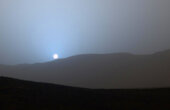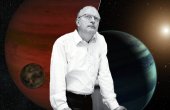Why Exoplanets Matter: In Conversation With Sara Seager
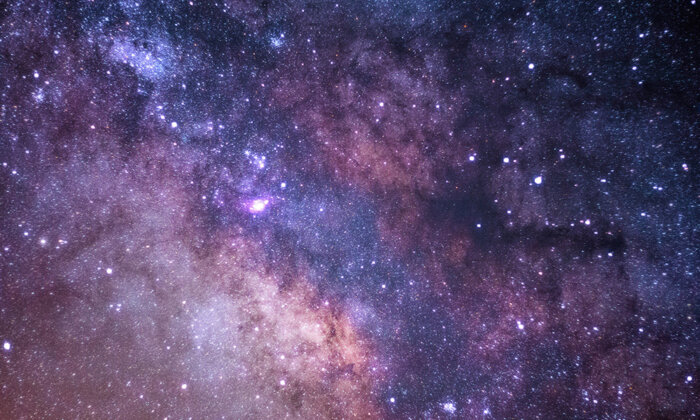
At the time when the first reports of exoplanets — planets that orbit stars other than our Sun — began appearing, Sara Seager, an astrophysicist and planetary scientist at MIT, was busy earning a doctorate in astronomy at Harvard University. Her groundbreaking research on extrasolar planets and their atmospheres has since earned her a prestigious Macarthur fellowship, an election to the National Academy of Sciences, and a spot in Time magazine’s list of the 25 ‘most influential people in space and astrophysics.’ She also serves as Deputy Director of Science on TESS (Transiting Exoplanet Survey Satellite), an MIT-led NASA mission whose objective is to find planets outside our solar system, including those that could support life.
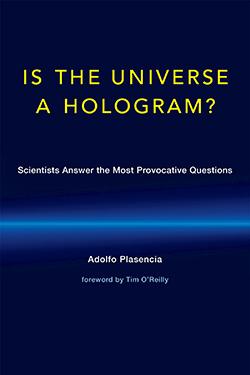
As part of an ongoing series of conversations with leading scientists and humanists (many are both), I caught up with Seager to talk about why discovering exoplanets matters to all of us, the possibility of finding intelligent life on them, and her tenacious search for a true Earth twin. Our conversation has been condensed and edited for clarity.
Adolfo Plasencia: You earned a Bachelor of Science in mathematics and physics before earning a doctoral degree in astronomy. Can you talk about your relationship to these fields?
Sara Seager: Math for me is just a tool. I use it just as an application to help solve problems; although I know there’s an aesthetic beauty, it’s a challenge for me to reach that level. Physics, on the other hand, is fascinating to me, very phenomenal, because it describes the world around us. And although it’s somewhat disappointing that you have to make many approximations, I see physics as both a tool and a beautiful way to describe the universe.
A.P.: At the time that you were earning your doctorate, exoplanet astronomy was developing very quickly: In 1995, researchers found the first known planet orbiting a Sun-like star; the following year, scientists discovered six more exoplanets, three of which were also big and broiling. Humanity finally had hard proof that the universe is full of other solar systems, something that until then had been an act of faith in science fiction. So exoplanets entered your life even before you made the decision to find them. Is that right?
S.S.: You’re very right: the exoplanets found me. It’s a little bit like you’re hiking in the forest and you come across a huge mountain. Do you climb the mountain or not? Exoplanets presented me with an opportunity, which I took. Yes, they interrupted my life, but I had to make a conscious choice to follow their path.
A.P.: Let’s talk about the “what.” Which features must a celestial object have for us to call it an exoplanet? Can this concept be understood by everybody?
S.S.: The simple way to look at it is that every star in the sky is a sun, and the planets of our Solar System orbit our Sun, just as exoplanets orbit other stars or other suns. Exoplanets come in all masses and all sizes and there’s literally a continuum from a small rocky planet to a bigger rocky planet, to a small planet with gas, to a bigger planet with gas. We are struggling a little bit to decide how to define planets, but I think it’s just better to see the bigger picture — that there are planets of all sizes and masses and that nature forms many kinds of planets, and we just simply call an exoplanet a planet that orbits a star other than our Sun.
Nature is always smarter than we are and it may actually have implemented something that is at the limits of our creativity.
A.P.: According to NASA’s exoplanet archive, 3,970 exoplanets have been discovered to date, largely thanks to the now-retired Kepler space telescope. (For some context: In the 4,000 years from the emergence of Mesopotamian astronomy until the 1990s, scientists found a total of three new planets — two if you don’t count Pluto.) In April, the agency successfully placed into orbit the Transiting Exoplanet Survey Satellite, which was designed to identify other worlds around the nearest stars, having so far confirmed the existence of 15. There may be tens of billions of these in our galaxy alone. These ideas seemed unimaginable not too long ago. How can you convince people responsible for budgets that really remote things like exoplanets are relevant to all of us?
S.S.: It’s not hard to convince anyone in the world at any level how exciting and compelling the search for rocky exoplanets is. In fact, people hardly need convincing to understand how exciting the search for exoplanets actually is. When it comes to a mission like TESS, there’s a competition that unfolds over many years, and one has to have a very compelling scientific case and an airtight technical case, so that’s why TESS was selected by the higher officials at NASA. In general, though, the astronomy community gets together and decides what its priorities are. It’s sort of like a wave passing through matter: More and more astronomers want to work on exoplanets. And it’s a kind of democratic process at some level, deciding which science of which mission gets chosen. However, I think the science of exoplanets is very special because, unlike most fields in astronomy or in science, it generally captures the world’s fascination — and that includes the general public and the higher-level officials managing the budget — like almost no other topic we’ve ever seen before.
A.P.: There are many assumptions about the universe: Some argue there is just one universe, while others say there are several universes connected to each other. The last theory I read describes the universe as being some sort of depiction or a huge hologram. What do you think?
S.S.: Exoplanets used to be like science fiction, but now they’re scientific fact, and their study seems almost practical in comparison to thinking about multiple universes. So my opinion is that the multiple-universe study and that of extra dimensions are really more math and philosophy rather than actual astronomy. I think it will be some time, if ever, before we have a way to find real evidence for any universe beyond our own or even what our universe really is.
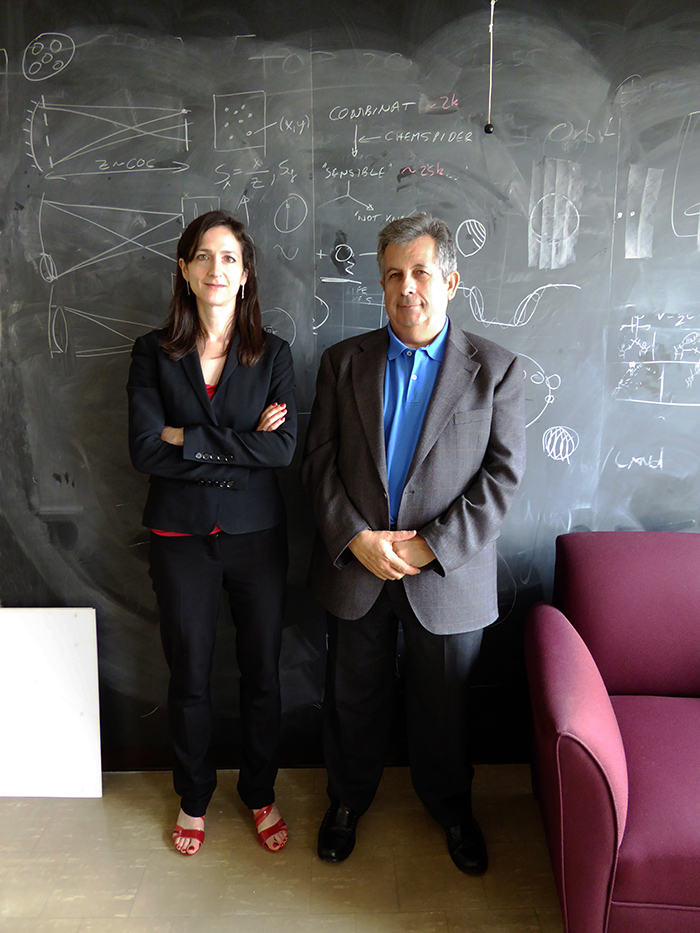
A.P.: Is this type of deliberation really worthwhile since it all seems so unreal and impossible?
S.S.: Yes, absolutely; it is something that should be discussed. I think a great analogy is inflation: We believe that our universe initially had to rapidly expand by something called inflation, which for some was just an idea, a concept worked out mathematically through physics, and recently we’ve begun to think there’s actual evidence in the echoes of the Big Bang. Therefore, some idea today that seems a little crazy needs to be worked through because whatever we think of, nature is always smarter than we are and it may actually have implemented something that is at the limits of our creativity. This said, there may be a time in the future when we can actually prove it.
A.P.: Let’s talk about the “how.” Can a remote planet that can’t be seen be found?
S.S.: Most planets are seen indirectly. A planet is so small, so less in mass and so faint compared to the big star that it is right next to that it’s nearly impossible to see a planet directly. So, as for most planets that have been discovered, we only see them indirectly, by their effects on their host star. We’ve kind of accepted this to such a degree that we barely even talk about it.
A.P.: Michail Bletsas, a research scientist and the Director of Computing at the MIT Media Lab, has said he is convinced that in this century there will be nonbiological intelligence, intelligence not based on Homo sapiens. Could life on remote planets already be intelligent life? Would it compare to human life as we know it? Would it be biological or nonbiological life?
S.S.: I have to start out by saying that in astronomy, we’re more focused on what we can see and find, and remotely, all we can see are chemicals; we can see the atmospheres of other planets. With future space telescopes we’ll be able to look at the atmospheres of planets the size of Earth and see what chemicals are there; here on Earth, plants and photosynthetic bacteria produce oxygen, and oxygen is a very reactive gas and shouldn’t be in our atmosphere at all, so if we can see oxygen on a planet far away we have a clue that there may be biological life that uses chemistry, that uses chemical reactions to release and store energy. From astronomy we can only search for life that makes some kind of by-product that is chemical, so I think in astronomy we can only look for biological life. My personal opinion about life that could traverse the galaxy, if we are now talking about life that could come to Earth, or in the future, if we’re able to travel to a distant star system, is that it probably has to be nonbiological because space is very harmful for people. We can barely survive on Earth, if you think about it, and Earth is a very safe, well-designed place for us, or rather we are adapted to our environment. So I think for us initially as human beings to find life elsewhere, it’s bound to be biological, since that’s all we can see; it’s all we know how to do. But if we ever think of traveling through the galaxy or of alien life coming here, then I believe on a personal level that it will be nonbiological.
A form of life that could traverse the galaxy or travel to a distant star system would probably have to be nonbiological.
A.P.: It takes less and less time to discover a new exoplanet. Are some of them more exciting than others as far as the possibility of finding life is concerned?
S.S.: I’d like to backtrack a little and say that, initially, I and others used to know every single exoplanet by its name and features when there were only ten of them; we knew them all. Then, as the years went by, there were too many to remember. If you have one or two children, you remember them, but perhaps if you have so many great-grandchildren it’s as though there are just too many of them to recall. So it’s true that now we have less emotional connection. As for these new planets that are found and are supposedly habitable — we actually don’t know for sure whether they’re habitable — we only know their size and the amount of energy they’re receiving at the upper limit of their atmosphere. We don’t really know what they’re like, we don’t have enough information on them to know if they’re habitable; that’s probably why I wouldn’t get emotional. On the whole, it’s not so much the distance; it’s the idea that our universe and our galaxy are full of small rocky planets. We know it for a fact, they are so common — every star must have a handful of them — and it’s emotional to think that every time you look in the sky those stars probably have a rocky planet, whether or not it’s habitable. Some of them actually will be, so the very fact that we’re finding a few of them makes it exciting to think how many of them are actually out there.
A.P.: For your 40th birthday, you threw an unconventional party at MIT. You invited a few dozen colleagues, including a prestigious former astronaut and the director of the Space Telescope Science Institute. And you told them you only wanted one present: to help you “plot a winning strategy to find another Earth,” and do it within your lifetime. Tell me more about that.
S.S.: I saw the occasion as a kind of halfway point in my life, although I do expect to live to be a hundred or older. I did invite all my so-called famous friends (related to space science and astrophysics). And I asked them to be bold, not like at a regular conference. I gave them a short amount of time to say something important, and I would say that not a single specific thing came out of the conference. It was more a question of momentum building; you had all these people stand up there and say how important it is to find a planet, how they believed that we need to work harder, that we need to focus our efforts. I think it made an important mark on the world, and I had each talk videotaped. You didn’t see the part afterward where we celebrated! That part was not filmed, but the actual talks are filmed so people can go back and look at them. So yes, I have had a growing sense that it is the biggest challenge of my life, you’re correct, to try to find another Earth with signs of life on it. However, I already know that all these people are with me. It wasn’t just the scientists who came and talked at the meeting, it’s also about people like you who are writing about us, the viewers who are listening to us, everybody in the world who wants us to succeed. So although it’s a challenge, we believe it’s one that we can meet and for which we have the help of the entire world.
Adolfo Plasencia is a blogger, writer, and columnist on science and technology, and the author of “Is the Universe a Hologram? Scientists Answer the Most Provocative Questions.”
Sara Seager is an astrophysicist and planetary scientist at the Massachusetts Institute of Technology.
A longer version of this conversation appears in the book “Is the Universe a Hologram: Scientists Answer the Most Provocative Questions.”
